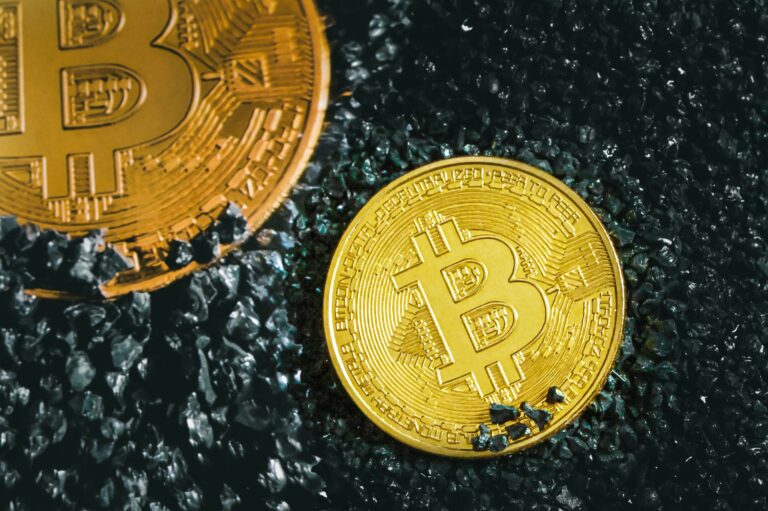Bitcoin took a hit as the latest U.S. jobs data created ripples through global financial markets, sending the cryptocurrency to its lowest point in a month. The data, which painted a picture of a resilient job market, triggered concerns about inflation and the broader economic outlook. As a result, Bitcoin’s price dropped, highlighting the ongoing volatility and uncertainty that continues to define both the digital currency and traditional financial markets.
The dip in Bitcoin’s value is not an isolated event. Cryptocurrencies, known for their sharp fluctuations, often react strongly to major economic announcements. The latest U.S. jobs report revealed that employment numbers were stronger than expected, raising fears that inflation could persist. This has fueled speculation about whether the Federal Reserve will keep interest rates higher for longer, a move that traditionally impacts riskier assets like Bitcoin.
Market reactions were swift. Bitcoin dropped by around 3%, dipping below $57,000, its lowest price in over a month. Investors, who had been hopeful for a continued rally in the cryptocurrency market, found themselves facing the reality of Bitcoin’s susceptibility to macroeconomic conditions. While many view Bitcoin as a hedge against inflation, the cryptocurrency has increasingly behaved like other risk assets, reacting to broader economic news in a similar way to equities.
The U.S. jobs data plays a crucial role in shaping the Federal Reserve’s decisions regarding monetary policy. A strong labor market often signals inflationary pressures, leading the Fed to consider tightening measures, such as raising interest rates. Higher interest rates generally make borrowing more expensive, which can dampen investment in speculative assets, including cryptocurrencies. In this case, investors appear to be recalibrating their expectations for both inflation and the Fed’s potential actions, resulting in a flight to safety and a sell-off in riskier assets like Bitcoin.
This latest Bitcoin drop also raises questions about the digital currency’s role as a hedge against inflation. Bitcoin advocates have long promoted it as a store of value, akin to gold, that can protect against the erosion of purchasing power during periods of high inflation. However, the reality has often been different. Bitcoin’s price has shown significant correlation with stock market trends and macroeconomic factors, including central bank policies. While it can serve as a hedge for some, its volatility makes it a double-edged sword.
For Bitcoin investors, this dip underscores the challenges of navigating the cryptocurrency market. Many had been hopeful that Bitcoin’s price would continue to rise, buoyed by growing institutional interest and its expanding use cases. However, as this recent drop shows, the digital currency remains vulnerable to external factors that can quickly shift market sentiment.
The U.S. jobs data has also had a broader impact on global markets. Stocks and bonds reacted negatively to the report, as investors became concerned about the possibility of prolonged high interest rates. The yield on U.S. Treasuries rose, reflecting fears that the Fed may continue its tightening policies to combat inflation. This environment of economic uncertainty has left many investors seeking safer havens, with Bitcoin being cast aside, at least temporarily, in favour of more stable assets.
The link between traditional economic indicators and the cryptocurrency market has become more pronounced in recent years. As Bitcoin and other digital currencies have gained mainstream acceptance, they have also become more intertwined with global financial markets. While this has led to increased legitimacy for Bitcoin, it has also exposed it to the same market forces that influence stocks, bonds, and commodities. As a result, Bitcoin is no longer immune to the effects of traditional market indicators like jobs reports, inflation data, and interest rate decisions.
Despite the recent drop, many in the cryptocurrency community remain optimistic about Bitcoin’s long-term prospects. The digital currency has weathered numerous downturns in the past, only to bounce back stronger. Advocates argue that the underlying fundamentals of Bitcoin—its decentralised nature, limited supply, and growing adoption—continue to make it a valuable asset in the long run. While short-term price fluctuations can be unsettling, especially for new investors, many see these dips as opportunities to accumulate more Bitcoin at a lower price.
However, others caution that the volatility of Bitcoin and the broader cryptocurrency market should not be underestimated. While Bitcoin has shown resilience in the past, its price is still subject to extreme swings that can result in significant losses for investors. The events of the past few days serve as a reminder that Bitcoin is far from a safe bet, and those investing in it should be prepared for both its highs and its lows.
Looking ahead, much will depend on how the global economy evolves and how central banks respond to the ongoing challenges of inflation. If inflation persists and central banks continue to raise interest rates, Bitcoin could face further downward pressure. On the other hand, if inflationary concerns ease and the Fed adopts a more dovish stance, Bitcoin may regain its footing and resume its upward trajectory.
The latest dip in Bitcoin’s price is a reflection of broader market dynamics at play. While the cryptocurrency continues to attract attention and investment, it remains highly sensitive to economic conditions and central bank policies. For now, Bitcoin investors are left to ponder the implications of the U.S. jobs data and how it might shape the future of both the traditional and digital financial landscapes.











